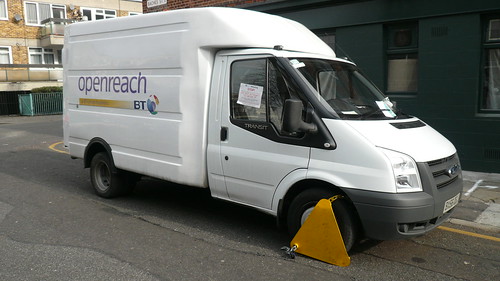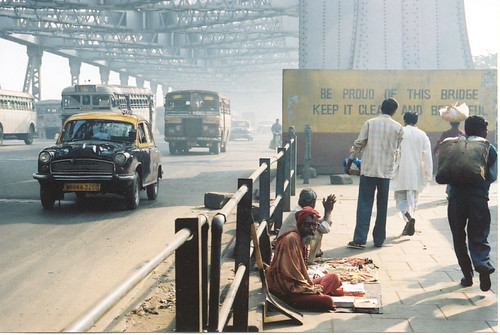Stiff Upper Lips Open! Britons Lash Out Against “Cowboy Clamping” calling it Legalised Mugging; British Automobile Association Wants To Make Abusive Parking Enforcement Practices Illegal
(Source: Daily Mail, UK)
Millions of motorists are being ‘legally mugged’ by cowboy clampers whose antics are ‘out of control’, a damning report by the AA reveals today.
Growing parking enforcement in private car parks and the huge amounts of money being taken from drivers has reached ‘epidemic’ level, says the AA. More than one in 10 drivers say they have been issued a private parking ticket over the last year* and tens of thousands of people have had their car clamped or removed from private car parks.
An ‘epidemic’ has seen nearly £1billion being taken from half a million drivers a year in private car parks by an army of 2,000 clampers.
Motorists routinely pay in excess of £500 to retrieve their clamped and towed away cars with no way to challenge the fines independently except expensive battles in a county court.
Private parking enforcement is riven with ‘bad and immoral’ wheelclamping practices that are ‘frightening and often bordering on criminality’, says the AA, with women motorists in particular feeling ‘menaced’ and intimidated.
The organisation adds that anyone may set himself up as a parking enforcer and ‘start to cash in’.
Alarmingly, clampers are allowed to exploit the Government’s supposedly confidential DVLA database to get drivers’ names and addresses at £2.50 a time.
The AA wants the Government to make it illegal in England and Wales to clamp on private land, as it is in Scotland where it has been considered ‘extortion and theft’ since a 1992 court ruling.
About one in 17 motorists have been clamped, says the RAC Foundation, which also believes the law to be ‘suspect’ and open to legal challenge.
The Government estimates there are between 100 and 200 clamping companies. Some 1,900 individuals have valid licences from the Security Industry Association (SIA). Since May 2005 only 16 have been revoked and 233 refused.
The AA’s Press Release points to some recent incidents, some of which are shocking nonetheless unacceptable to any motoring public (unless, you are not from a civilised part of the world, where anything and everything goes):
The prevalence of bad and immoral practices is now shocking and unacceptable. Whilst the AA accepts that some enforcement is justified, the scale of private enforcement and level of punishment meted out by an army of private enforcers is frightening and often borders on criminality.
In recent examples:
- An elderly pensioner and her sick husband who were wrongly ‘doubled charged’ £370 by a clamper/tower (who belonged to the ‘trade association’ and breached its code despite having declared it would abide by its rules) – they have now recovered their cash after threats of legal action.
- A lady who stopped, literally for seconds, heard a noise at the rear of her car. Someone said ‘I won’t be a moment’ and clamped her car while she sat in it with the engine running – before ‘double-charging’ her £300.
- A lady who was given a ticket in a free car park for straddling lines. The ticket could not be paid as there were no details on it, and then she was sent a ‘£100 Charge Certificate’ after the parking firm obtained her details from DVLA despite inadequate signing in the car park
- A lady, on her own, whose car was clamped and removed in Enfield at night and was charged £527 to get her car back – the clamper belonged to the ‘trade association’ and breached its code despite having declared it would abide by its rules.
Private enforcers can either wheel clamp and remove or issue ‘parking tickets’, usually by accessing the car owners name and addresses from the DVLA’s vehicle database.
Read more at Mail Online. Also click here to read the entire AA press release.
TransportGooru Musings: It would be in the best of the Government and the Transportation officials to take a look at the interesting results from the online poll published on the Daily Mail’s website, which has almost 87% of the public showing their dislike for this practice.






 Registration Information
Registration Information




